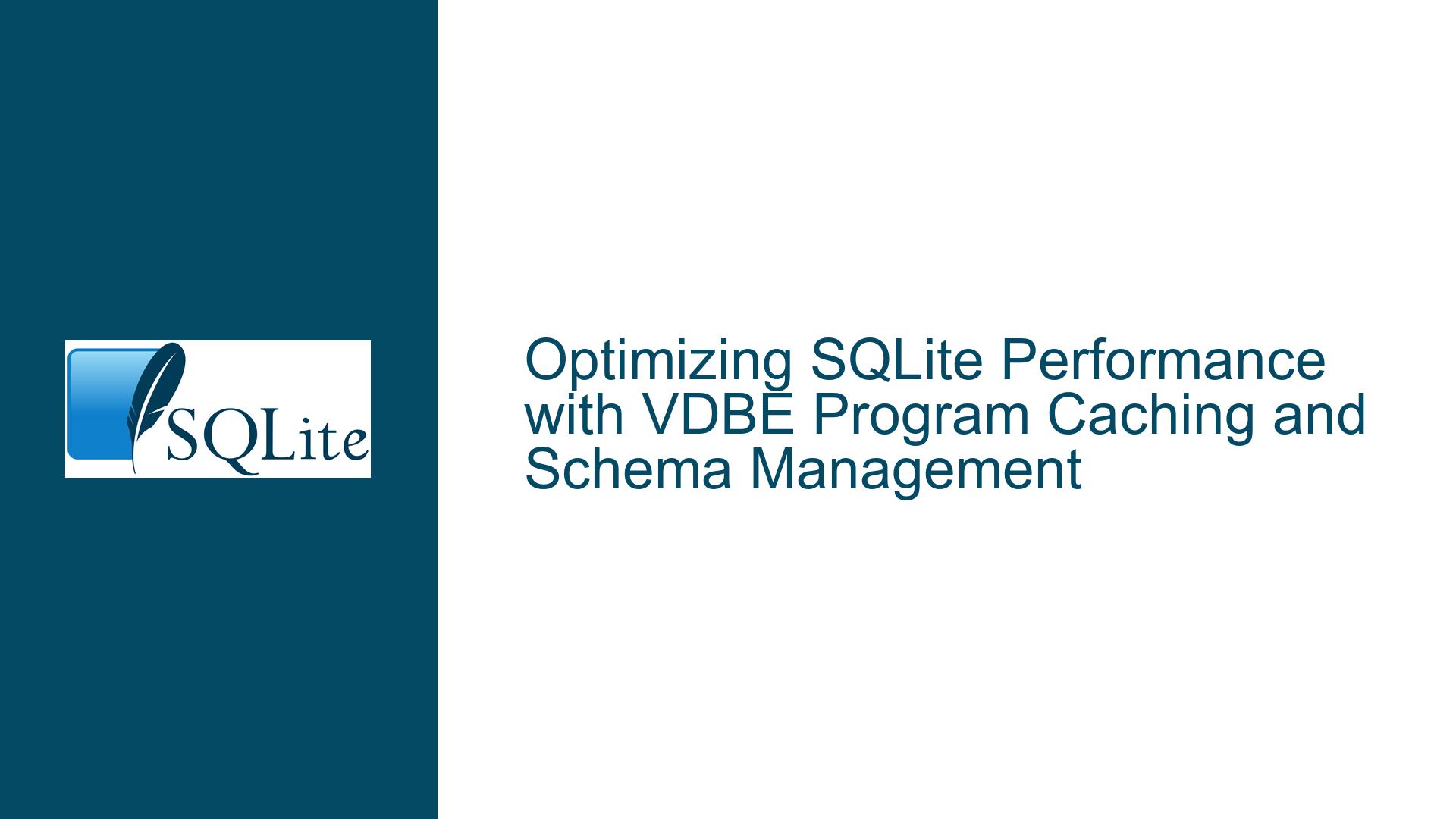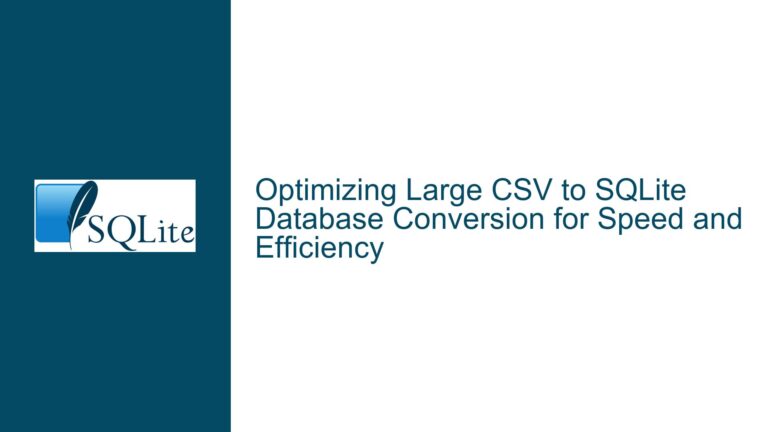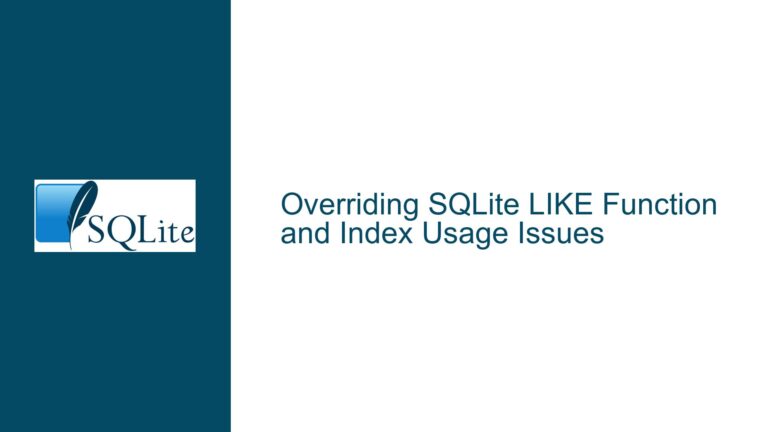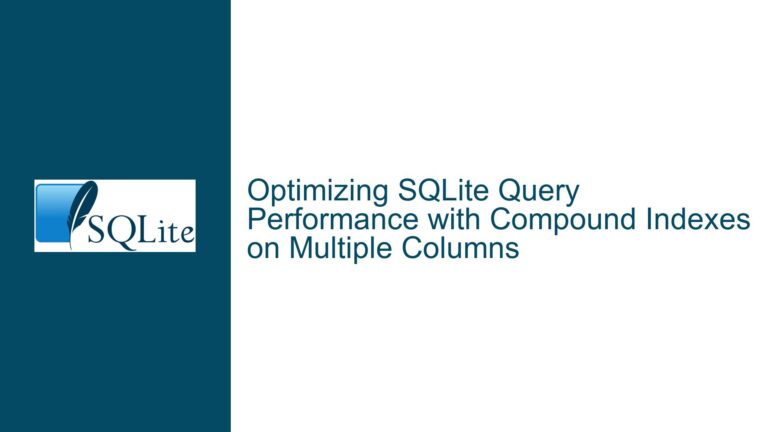Optimizing SQLite Performance with VDBE Program Caching and Schema Management
The Need for VDBE Program Caching in SQLite
SQLite is renowned for its lightweight design and efficiency, but like any database system, it can face performance bottlenecks under certain workloads. One such bottleneck arises when the same SQL query is executed repeatedly, requiring the query to be recompiled into Virtual Database Engine (VDBE) instructions each time. This recompilation process consumes CPU cycles and memory, which can be particularly problematic in high-throughput applications or environments with limited resources.
The core issue here is the absence of a mechanism to cache compiled VDBE programs. Currently, SQLite compiles SQL statements into VDBE instructions every time a query is prepared, even if the same query has been executed before. This lack of caching leads to redundant computational effort, especially in scenarios where the same query is executed multiple times, either within a single connection or across multiple threads or connections.
The problem is exacerbated in multi-threaded applications, where each thread typically maintains its own connection to the database. Without a shared cache, each thread must independently compile the same SQL statements, leading to duplicated effort and increased resource consumption. This inefficiency becomes more pronounced as the number of concurrent threads or connections grows.
Challenges in Implementing a VDBE Program Cache
Implementing a VDBE program cache in SQLite is not without its challenges. One of the primary concerns is cache invalidation. The compiled VDBE program for a given SQL statement is not static; it can change in response to schema modifications or updates to database statistics. For example, if a table’s schema is altered or if the ANALYZE command is run to update statistics, the previously cached VDBE program may no longer be optimal or even correct. This necessitates a mechanism to invalidate or update cached programs when the underlying schema or statistics change.
Another challenge is managing the cache in a multi-threaded environment. SQLite connections are typically thread-local, meaning that each thread operates independently with its own connection and prepared statements. To be effective, a VDBE program cache would need to be shared across connections, introducing the need for thread-safe cache management. This includes ensuring that cached programs are not modified or invalidated while in use by one thread, while still allowing other threads to access and update the cache as needed.
Additionally, there is the question of cache size and eviction policies. A cache that grows without bounds could consume excessive memory, while a cache that is too small may not provide significant performance benefits. Implementing an effective eviction policy, such as Least Recently Used (LRU), is crucial to balancing memory usage and cache effectiveness.
Solutions and Best Practices for VDBE Program Caching
To address these challenges, several solutions and best practices can be implemented. First, a VDBE program cache should be introduced at the library level, allowing compiled programs to be shared across connections. This cache would store VDBE programs keyed by the SQL text, along with metadata such as the schema version and statistics used during compilation. When a query is prepared, SQLite would first check the cache for a matching program. If a match is found and the schema and statistics are still valid, the cached program would be reused, avoiding the need for recompilation.
Cache invalidation can be handled by associating each cached program with the schema version and statistics used during its compilation. When a schema change or ANALYZE command is executed, the cache can be invalidated or updated accordingly. This ensures that cached programs remain consistent with the current state of the database.
For multi-threaded environments, the cache should be implemented with thread-safe mechanisms to prevent race conditions. This could involve using mutexes or other synchronization primitives to protect access to the cache. Additionally, reference counting can be used to ensure that cached programs are not freed while still in use by one or more threads.
To manage cache size, an LRU eviction policy can be employed. This policy would remove the least recently used programs from the cache when it reaches a predefined size limit. The cache size could be configurable, allowing applications to balance memory usage and performance based on their specific needs.
Finally, the SQLite API could be extended to provide more control over caching. For example, a new flag could be added to sqlite3_prepare_v3 to indicate whether a query should be cached. This would allow applications to opt-in to caching for frequently executed queries while avoiding caching for queries that are unlikely to benefit from it.
By implementing these solutions, SQLite can significantly reduce the overhead associated with query compilation, leading to improved performance and resource utilization in a wide range of applications.






